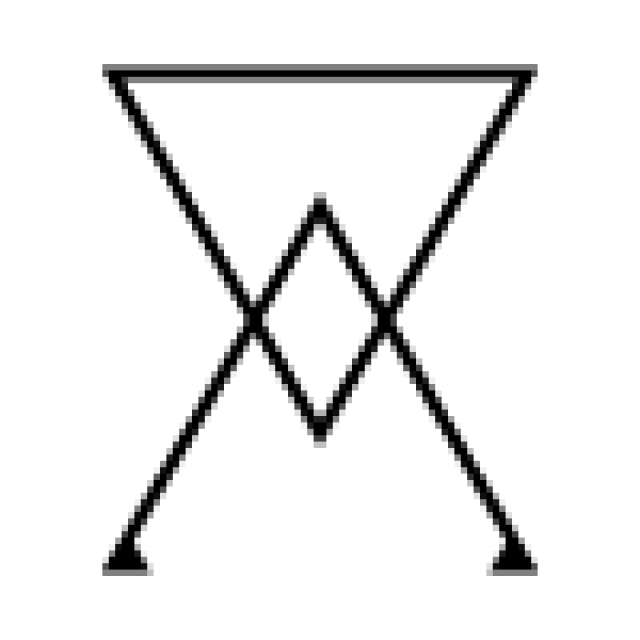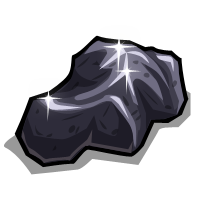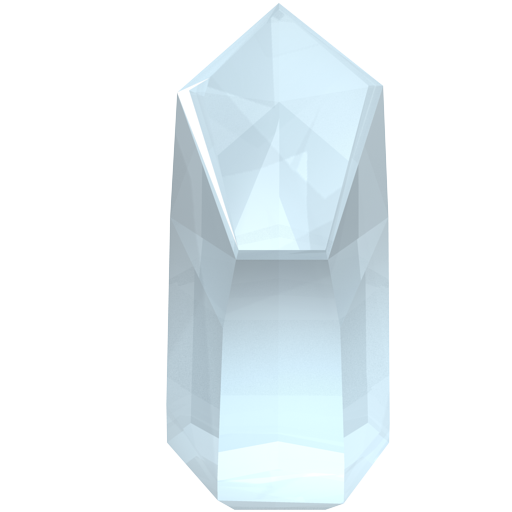
 1.87
1.87
 1.63
1.63

 1.78
1.78
 0.97
0.97
 0.53
0.53

 2.54
2.54
 1.55
1.55
 1.74
1.74
 1.85
1.85 13.31
13.31
 16.65
16.65
 19.35
19.35

 21.04
21.04
 11.5
11.5
 22.59
22.59 12.37
12.37


 22.56
22.56 12.41
12.41



 21.45
21.45 12.02
12.02




 19.32
19.32







 13.55
13.55




 11.85
11.85

 2.34
2.34





 2.33
2.33
 2.26
2.26










 1.82
1.82



 2.07
2.07Quick reference table:
| Prd => | 6 | 5 | 4 | 3 | 2 |
| 1 |
55  Cs  1.87 1.87 |
37  Rb  1.63 1.63 |
19  K   1.78 1.78 |
11  Na  0.97 0.97 |
3  Li  0.53 0.53 |
| 2 |
56  Ba 3.59 |
38  Sr  2.54 2.54 |
20  Ca  1.55 1.55 |
12  Mg  1.74 1.74 |
4  Be  1.85 1.85 |
| [L] |
57 - 71
|
||||
| 3 |
71 Lu 9.84 |
39 Y 4.47 |
21 Sc 3.00 |
||
| 4 |
72 Hf  13.31 13.31 |
40 Zr |
22  Ti |
||
| 5 |
73 Ta  16.65 16.65 |
41 Nb 8.57 |
23 V 6.11 |
||
| 6 |
74  W  19.35 19.35 |
42  Mo |
24  Cr |
||
| 7 |
75 Re  21.04 21.04 |
43  Tc  11.5 11.5 |
25  Mn 7.43 |
||
| 8 |
76 Os  22.59 22.59 |
44 Ru  12.37 12.37 |
26   Fe  |
||
| 9 |
77 Ir  22.56 22.56 |
45 Rh  12.41 12.41 |
27  Co  8.9 |
||
| 10 |
78  Pt   21.45 21.45 |
46 Pd  12.02 12.02 |
28   Ni  |
||
| 11 |
79  Au   19.32 19.32 |
47  Ag  10.5 |
29   Cu  |
||
| 12 |
80   Hg   13.55 13.55 |
48  Cd 8.65 |
30   Zn  |
||
| 13 |
81  Tl  11.85 11.85 |
49 In 7.31 |
31  Ga 5.91 |
13  Al |
5 B  2.34 2.34 |
| 14 |
82   Pb
 |
50   Sn  |
32 Ge 5.32 |
14 Si  2.33 2.33 |
6  C  2.26 2.26 |
| 15 |
83  Bi  |
51   Sb  6.68 |
33   As  5.72 |
15   P   1.82 1.82 |
7 N |
| 16 |
84  Po 9.3 |
52  Te 4.93 |
34 Se |
16  S   2.07 2.07 |
8 O |
Here is a list of minerals I have collected - see the key below. I have focused on the chief ore(s) of each element. The organizational framework is a Periodic Table rotated 90 degrees clockwise - Rows are Groups, from Group 1 at top, to Group 16; Group 17 - Halogens - omitted; Group 18 - Noble Gasses - omitted. Columns are Periods, from Period 6 on left to Period 2 on right; Period 1 - Hydrogen and Helium - omitted; Period 7 - all radioactive - omitted. Transition Metals in Groups 3-12 only in Periods 6-4.
Useful links: [Mineral Galleries] [Webmineral] [Mindat] [Lenntech]
 - Hazardous when uncombined [some even hazardous in ores]
- Hazardous when uncombined [some even hazardous in ores] - Known to the ancients -
{ Fe, Au, Ag, Cu, Hg, Pb, Sn, Sb, C, S }
- Known to the ancients -
{ Fe, Au, Ag, Cu, Hg, Pb, Sn, Sb, C, S }
 - Known to alchemists by 1760 -
{ Co, Pt, Ni, Zn, Bi, As, P }
- Known to alchemists by 1760 -
{ Co, Pt, Ni, Zn, Bi, As, P }
 - density > Pb
- density > Pb
 - density < Al
- density < Al
 - I have a rough sample of this
- I have a rough sample of this - I have a sample crystal of this
- I have a sample crystal of this - I have a tumbled sample of this
- I have a tumbled sample of this
Main table:
| Prd => | 6 | 5 | 4 | 3 | 2 |
| 1 |
55 Cs  1.87 1.87reacts violently with water releasing hydrogen gas and igniting it - metal will catch fire on exposure to air MP 29C cesium clock is standard measure of time
pollucite (Cs,Na,Rb)2 Al2Si4O12 * 2H2O |
37 Rb  1.63 1.63reacts violently with water releasing hydrogen gas and igniting it - metal will catch fire on exposure to air as abundant as zinc and more common than copper Substitutes for K in
|
19 K  1.78 1.78
SiO
O/OH
S
SO4
F/Cl
CO3
PO4
reacts violently with water releasing hydrogen gas and igniting it 7th in crust 2.6%
sylvite KCl non mineral K2O, KOH, K2S, K2SO4, potash K2CO3, many phosphates |
11 Na  0.97 0.97
SiO
O/OH
S
SO4
F/Cl
CO3
PO4
reacts violently with water releasing hydrogen gas and igniting it 6th in crust 2.8% Halite NaCl
non mineral Na2O (SOX), lye NaOH, Na2S, soda ash Na2CO3, many sodium phosphates e.g. Na3PO4 |
3 Li  0.53 0.53
SiO
O/OH
S
SO4
F/Cl
CO3
PO4
lightest metal by far; reacts vigorously with water releasing hydrogen gas only 13 Li minerals known
LiCO3 brines
Spodumene LiAl (SiO3)2
lepidolite KLi2 AlSi4O10 F (OH) eucryptite LiAl SiO4
kickerite Li2O
|
| 2 |
56 Ba 3.59   
witherite BaCO3 
romanèchite or psilomelane (Ba,H2O)2 * Mn5O10  
benitoite BaTi Si3O9 |
38 Sr  2.54 2.54 
(lg crystal in cabinet) strontianite SrCO3 (?) weloganite Sr3Na2Zr (CO3)6 * 3H2O 
(tiny crystal in drawer) |
20 Ca  1.55 1.55
SiO
O/OH
S
SO4
F/Cl
CO3
PO4
5th in crust 3.6% calcite CaCO3
aragonite CaCO3 aragonite crystal 
blue aragonite 
brown banded aragonite 
anhydrite CaSO4 (anhydrous) light blue "angel wing" xl  
gypsum CaSO4 * 2H2O 
4 varieties of gypsum: selenite  
satin spar desert rose aka selenite rose (?) 
gypsum flower fluorite CaF2 clear fluorite octahedron 
blue fluorite 
tri-color fluorite 
yellow fluorite 
purple fluorite    
apatite Ca10 (PO4)6 (OH,F,Cl)2  
hydroxyl - apatite fluor - apatite chlor - apatite datolite CaB SiO4 (OH)  (polished slab) also (?) (polished slab) also (?)
grossular-garnet (?) vesuvianite (idocrase) Ca10 (Mg, Fe)2 Al4 (SiO4)5 (Si2O7)2 (OH,F)4 
prehnite Ca2 Al2 Si3O12 (OH) 
epidote Ca2 Al2 (Fe,Al) (SiO4) (Si2O7) O(OH) 
actinolite Ca2 (Mg ,Fe) Si8O22 (OH)2  (in quartz) (in quartz)  (in talc) (in talc)
axinite Ca2 (Fe++, Mn++. Mg) Al2BO3 Si4O12 (OH) 
non mineral lime CaO, CaCl2 (highly soluble in H2O)
|
12 Mg  1.74 1.74
SiO
O/OH
S
SO4
F/Cl
CO3
PO4
8th in crust 2.1%
magnesia / periclase MgO
|
4 Be  1.85 1.85
SiO
O/OH
S
SO4
F/Cl
CO3
PO4
bertrandite (Tiffany stone) Be4 Si2O7 (OH)2 beryl Be3 Al2 (SiO3)6
herderite CaBe PO4 (OH,F) (?)
chrysoberyl BeAl2O4
bromellite BeO (rare)
|
| [L] |
57 - 71
|
||||
| 3 |
71 Lu 9.84 rare earth phosphate (La,Ce, ...) PO4 |
39 Y 4.47 monazite bastnaesite (REE)(CO3)F euxenite (Y,Ca,Ce,U,Th) (Nb,Ta,Ti)2 O6 xenotime YPO4 fergusonite YNbO4 |
21 Sc 3.00 thortveitite (Sc,Y)2Si2O7 
|
||
| 4 |
72 Hf  13.31 13.31alvite (Hf,Th,Zr) SiO4 |
40 Zr baddeleyite zirconia ZrO2 |
22 Ti rutile alpha TiO2 ilmenite FeTiO3 leucoxene anatase beta TiO2 titanite (sphene) CaTiSiO5 brookite |
||
| 5 |
73 Ta  16.65 16.65causes no immune response - used in surgical appliances tantalite (Fe,Mn) * Ta2O6 |
41 Nb 8.57 pyrochlore (Na,Ca)2 Nb2 O6 (OH,F) |
23 V 6.11 vanadinite (PbCl) * Pb4(VO4)3 vanadinite - red 
vanadinite - green 
(xls on matrix) patronite VS4 carnotite K2(UO2)2 V2O8 * 3(H2O) (?) cavansite Ca(VO) Si4O10 * 4H2O 
|
||
| 6 |
74 W  19.35 19.35denser than Uranium 19.1 and Gold 19.32 scheelite CaWO4  
huebnerite MnWO4 
ferberite FeWO4 Stolzite PbWO4 Tungstenite WS2 (rare, sm xls) wolframite (Fe,Mn) WO4 
|
42 Mo    (in quartz) (in quartz)
wulfenite PbMoO4  
powellite CaMoO4 molybdite MoO3 (rare) |
24 Cr 7.19 
crocoite PbCrO4 
fuchsite K(Al,Cr)3 Si3O10 (OH)2 - see K uvarovite Ca3Cr2 (SiO4)3 (?) |
||
| 7 |
75 Re  21.04 21.04flue dusts of molybdenum smelters |
43 Tc  11.5 11.5 |
25 Mn 7.43
SiO
O/OH
S
SO4
F/Cl
CO3
PO4
[native] hauerite MnS2 (rare, sm xls)
|
||
| 8 |
76 Os  22.59 22.59obtained from wastes of nickel refining |
44 Ru  12.37 12.37obtained from wastes of nickel refining [native] pentlandite pyroxinite |
26 Fe
SiO
O/OH
S
SO4
F/Cl
CO3
PO4
4th most abundant element in crust 5%
hematite Fe2O3 rozenite (aka green vitriol)
Fe++ SO4 * 4H2O
|
||
| 9 |
77 Ir  22.56 22.56obtained from wastes of nickel refining |
45 Rh  12.41 12.41obtained from wastes of nickel refining |
27  Co 8.9 
smaltite (Co, Fe, Ni) As2 skutterudite (Co, Fe, Ni) As2-3 
erythrite Co3 (AsO4)2 * 8(H2O) |
||
| 10 |
78  Pt  21.45 21.45sperrylite PtAs2 cooperite PtS |
46 Pd  12.02 12.02obtained from wastes of nickel refining |
28  Ni 8.9 pyrrhotite - see Fe garnierite (Ni,Mg)4 Si6O15 (OH)2 * 6(H2O) nickeline (aka niccolite) NiAs  
millerite NiS (?) breithauptite NiSb (?) ullmannite NiSbS annabergite Ni3 (AsO4)2 * 8H2O 
|
||
| 11 |
79 Au  19.32 19.32highest malleability and ductility of any element [native] electrum calaverite sylvanite petzite |
47 Ag 10.5 acanthite Ag2S |
29 Cu
SiO
O/OH
S
SO4
F/Cl
CO3
PO4
Cu probably the first metal mined by humans - beads dating from 6000BCE found in Turkey
[native] chyrsocolla
(Cu,Al)2 H2 Si2O5 (OH)4 * n(H2O)
nantokite CuCl
|
||
| 12 |
80 Hg  13.55 13.55cinnabar HgS 
cinnabite (cinnabar in calcite) 
|
48 Cd 8.65 greenockite CdS is the only mineral containing significant quantities 
|
30 Zn
SiO
O/OH
S
SO4
F/Cl
CO3
PO4
sphalerite (aka zincblende)
smithsonite ZnCO3
hemi - morphite
Zn4 Si2O7 (OH)2 legrandite (rare) Zn2 (AsO4) (OH) * (H2O) goslarite (white vitriol) ZnSO4 * 7H2O
non mineral ZnF2, ZnCl2 (deli - quescent)
|
||
| 13 |
81 Tl  11.85 11.85recovered from processing Cu, Pb, and Zn ores |
49 In 7.31 byproduct of zinc processing cylindrite 
(xls in matrix) |
31 Ga 5.91 byproduct of zinc and alumina processing trace amounts in: diaspore, sphalerite, germanite, bauxite, coal |
13 Al  2.70 2.70
SiO
O/OH
S
SO4
F/Cl
CO3
PO4
3rd most abundant element in crust 8.1%
bauxite (not a mineral) kyanite Al2SiO5 blue kyanite   
blue-green kyanite 
green kyanite 
black kyanite 
topaz Al2SiO4 (F,OH)2 white/blue topaz 
blue topaz 
silver (yellow) topaz 
variscite AlPO4 * 2H2O  
wavellite Al3 (PO4)2 (OH,F)3 * 5H2O 
(xls in matrix) pyrophyllite Al2 Si4O10 (OH)2 
(xls in matrix) dawsonite Na Al CO3 (OH)2 (see sodium) (?)
aluminite Al2 (SO4) (OH)4 * 7H2O
|
5 B  2.34 2.34colemanite Ca2B6O11 * 5H2O 
(xls on matrix, in cabinet) kernite Na2B4O6  (drawer) ulexite (TV stone) NaCaB5O9 * 8H2O 
ref. boranes |
| 14 |
82 Pb
 11.35 11.35
SiO
O/OH
S
SO4
F/Cl
CO3
PO4
MP 327C
galena PbS pietersite (chalcedony with embedded fibers of amphibole minerals) bournonite PbCu SbS3
simple lead silicates: alamosite PbO SiO2, barysilite (PbO)3 (SiO2)2 or Pb8Mn (Si2O7)3
litharge, massicot Pb++O
|
50 Sn
SiO
O/OH
S
SO4
F/Cl
CO3
PO4
MP 232C - lowest of common safe metals
cassiterite SnO2 herzenbergite SnS
malayaite CaSnO [SiO4]
|
32 Ge 5.32 zinc smelter flue dust germanite Cu3 (Ge,Fe) (S,As)4 argyrodite Ag8GeS6 |
14 Si  2.33 2.33quartz SiO2 rutilated quartz 
amethyst  
agate (many varieties!) 
tiger's eye chalcedony geodes 
aventurine
moissanite SiC |
6 C  2.26 2.26graphite 
shungite  , also cube , also cube
diamond limestone |
| 15 |
83 Bi bismuthinite Bi2S3 bismite Bi2O3 galeno - bismutite PbBi2S4 
manmade 
[native] 
|
51 Sb 6.68    
(lg in cabinet) stibiconite Sb+++ Sb+++++2 O6(OH) (?) valentinite Sb2O3 |
33 As 5.72  
realgar As4S4  (red) (red)
orpiment As2S3  (yellow) (yellow)
loellingite FeAs2  (small) (small)
|
15 P  1.82 1.82The 1st element to be chemically discovered, in 1669, prepared from urine apatite group - see Ca
|
7 N |
| 16 |
84 Po 9.3 |
52 Te 4.93 recovered in processing Cu ores [native] tellurite TeO2 sylvanite AgAuTe4 Tetradymite Bi2Te3 |
34 Se rare recovered from Cu processing [native] clausthalite PbSe crookesite Cu7 (Tl,Ag) Se4 eucairite CuAgSe berzelianite Cu2Se umangite Cu3Se2 |
16 S  2.07 2.07desulfurizing natural gas and petroleum [native] 
pyrite (fools' gold) FeS2 - see Fe |
8 O air 21% |